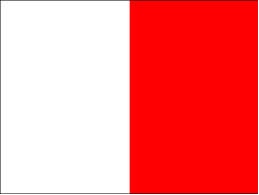Pilotage Services
Any vessel over 35 metres which is proceeding within a pilotage area in Tasmania must either carry a licenced marine pilot or be under the command of a master who holds a pilotage exemption certificate for the area.
This requirement applies to both commercial and recreational vessels.
Pilotage services for Tasmanian pilotage areas are managed by Tasports.
Pilotage areas are defined in the Marine and Safety (Pilotage and Navigation) Regulations 2017. They include the following ports:
- Port of Burnie
- Port of Naracoopa
- Port of Coles Bay
- Port of Port Arthur
- Port of Devonport P
- Port of Port Davey
- Port of Grassy
- Port of Port Latta
- Port of Hobart
- Port of Spring Bay
- Port of Lady Barron
- Port of Stanley
- Port of Launceston
- Port of Strahan
Marine pilots are licenced by Marine and Safety Tasmania (MAST) under the Marine and Safety Authority Act 1997.
Tasmanian Ports Corporation Pty Ltd – VTS Authority
The Tasmanian Ports Corporation Pty Ltd (TasPorts) has been authorised as a VTS Authority in accordance with the provisions of Marine Order 64 (Vessel Traffic Services) 2013, by the Australian Maritime Safety Authority (AMSA). Objectives of TasPorts VTS are to assist with the safety and efficiency of vessel movements and enhance navigational safety by interacting with shipping to provide information on potential traffic conflicts and other navigational safety information.
TasPorts VTS will be providing the following services:
- For the VTS Areas described in Schedule 1-7:
- Information Service; and
- Traffic Organisation Service
- For the VTS Areas described in Schedule 8-10:
- Information Service.
See the Tasports website for further information on TasPorts VTS services.
MAST has an agreement with Tasports for the management of vessels and pilotage services within their waterways. Under this agreement pilots are empowered as authorised persons under the Act for the direction and control of shipping.
As an authorised person a marine pilot is also empowered to examine a candidate for the issue of a pilotage exemption certificate which permits the holder to command a vessel over 35 metres within designated areas and under specified conditions. Applicants for a pilotage exemption certificate should contact Tasports below.
Vessels proceeding under pilotage show the International Code flag ‘H’ which is a rectangular flag divided vertically into red and white halves. Vessels proceeding with a pilot exempt master onboard fly a plain white flag. A vessel not under pilotage must give way to a vessel under pilotage.

Vessels to Maintain a Listening Watch on relevant VHF Channel when approaching or in a pilotage area
Any vessel within a pilotage area should maintain a listening watch on the VHF working channel used by Vessel Traffic Services (VTS) within that pilotage area, if the vessel is fitted with a VHF radio. In southern Tasmanian pilotage areas the VTS working channel is VHF channel 12. In Northern Tasmanian pilotage areas the VTS working Channel is VHF Channel 14. These working channels are monitored and used by VTS to provide communications around any shipping movements that may be occurring within the pilotage area. Most VHF radios can be set to a dual watch so that VTS working channel and channel 16 can be monitored at the same time.
International Ship and Port Facility Security Code
The new ‘International Ship and Port Facility Security Code’ (ISPS) has been in force in Australia since 1 July 2004. This Code is implemented under the Federal Maritime Transport Security Act 2003.
Increased monitoring and surveillance is now in place in all ports which service overseas and domestic shipping.
This means that access to these areas is restricted to persons who have a legitimate need to enter the wharf or port area. Entry is, generally, only permitted to those persons holding an access or identification card issued by the port company concerned.
Persons wishing to obtain an access card should contact the particular port administration offices (contact details are listed below)
Increased levels of security and surveillance are also in place for the waters within port areas. In particular, this will apply to tankers and passenger ships and exclusion zones around these types of vessels will apply. The limits of these exclusion zones vary, depending on the port and area in question, in general the following exclusion zones apply:
- Hobart – 50metre exclusion zone around passenger ships, warships and tanker
- Launceston/Bell Bay – 50metre exclusion zone around tanker
- Launceston/Inspection Head – 50metre exclusion zone around passenger ships
- Devonport – 25metre exclusion zone around passenger ships and tankers
- Burnie – the exclusion zone lies to the west of a line drawn between the outer mooring dolphins whenever a tanker or passenger ship is in port
These exclusion zones may be patrolled by security vessels or police vessels and any instruction issued by the person in charge of one of these vessels is to be obeyed. Failure to observe the exclusion zone requirements or failure to comply with instructions may result in significant penalties which are specified under the Act.
General information:
The Maritime Transport and Offshore Facilities Security Act 2003 may be viewed at Australian Government – CommLaw.
Information about port security access/ID cards can be obtained by contacting TasPorts:
- Hobart – Security Supervisor/Co-ordinator – 6235 1000
- Launceston – Port Control Officer – 6382 0111
- Devonport – Port Security Officer – 6421 4911
- Burnie – Port Security Officer – 6434 7353
The TasPorts website is recommended if you require more specific information relating to operational and security requirements in each port jurisdiction.